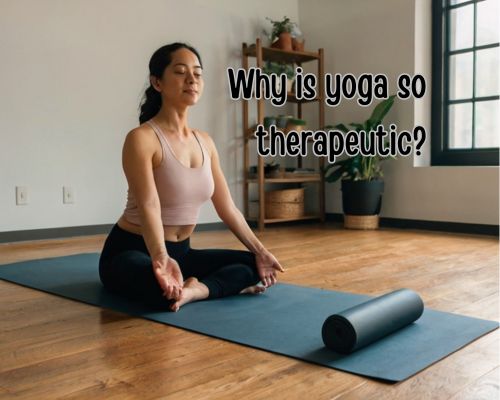Yoga is more than just a fitness trend; it’s a lifestyle shift that profoundly impacts the body, mind, and overall well-being. If you’re practicing yoga consistently, you might be wondering: What happens after 3 months of yoga? The answer is a transformative journey that influences physical strength, mental clarity, flexibility, and emotional resilience. In Mornington, Australia, where the serene coastal environment complements holistic wellness practices, yoga enthusiasts are discovering remarkable changes within just three months of practice.

Physical Transformation After 3 Months of Yoga
Improved Flexibility and Mobility
One of the most noticeable benefits of yoga after three months is enhanced flexibility. Poses like Downward Dog, Warrior II, and Pigeon Pose help lengthen and strengthen muscles, reducing stiffness. Residents of Mornington, who often engage in outdoor activities like surfing and hiking along the Mornington Peninsula, find that yoga complements their active lifestyle by increasing mobility and preventing injuries.
Enhanced Strength and Muscle Tone
Contrary to the misconception that yoga is only about stretching, consistent practice builds muscular strength. Poses such as Chaturanga, Plank, and Chair Pose engage core muscles, arms, and legs, improving endurance. Yoga practitioners in Mornington have reported significant improvements in muscle tone, making activities like stand-up paddleboarding and beach running more effortless.
Better Posture and Spinal Health
Long hours of desk work or mobile phone usage can lead to poor posture and spinal misalignment. Yoga, particularly postures like Cobra Pose and Cat-Cow, promotes spinal flexibility and alignment. Many Mornington locals who work in office-based jobs or hospitality notice relief from chronic back pain after three months of yoga practice.
Boosted Immunity and Overall Health
Yoga is known to enhance circulation, stimulate the lymphatic system, and improve digestion. These factors contribute to a stronger immune system, reducing susceptibility to colds and flu. With Mornington’s changing coastal weather patterns, yoga practitioners often find they experience fewer seasonal illnesses.
Mental and Emotional Benefits After 3 Months of Yoga
Reduced Stress and Anxiety
The breathwork (pranayama) and mindfulness techniques incorporated into yoga significantly lower cortisol levels, the hormone responsible for stress. After three months of consistent yoga practice, individuals in Mornington report feeling calmer, more focused, and less overwhelmed by daily challenges.
Improved Sleep Quality
Struggling with insomnia or restless nights? Yoga encourages relaxation by activating the parasympathetic nervous system. Postures like Legs-Up-The-Wall and Child’s Pose, combined with meditation, have been shown to improve sleep cycles. Many Mornington residents have noticed deeper, more restorative sleep after incorporating evening yoga sessions into their routine.
Greater Emotional Resilience
Yoga isn’t just about physical movement—it teaches mindfulness, patience, and self-awareness. Many practitioners report feeling more emotionally balanced and capable of handling life’s ups and downs. Whether dealing with work stress, relationship challenges, or personal setbacks, yoga provides a stable foundation for emotional well-being.
Lifestyle and Social Benefits of Yoga in Mornington
A Stronger Sense of Community
Mornington has a thriving yoga community, with studios like Mornington Yoga Centre and Bikram Yoga Mornington offering classes tailored for beginners and experienced practitioners alike. Engaging in group sessions fosters a sense of belonging and support, making it easier to stay motivated and committed to the practice.
Mindful Eating and Better Nutrition Choices
After three months of yoga, many practitioners become more conscious of their diet. Yoga encourages mindful eating, leading to healthier food choices that nourish the body. Mornington’s vibrant farmers’ markets and organic cafés, such as Soulful Vegan Food and Store Fifteen, provide easy access to nutritious meals that align with a yogic lifestyle.
A More Positive Outlook on Life
Yoga teaches gratitude, mindfulness, and self-acceptance, fostering a more positive mindset. Regular practitioners often experience increased self-confidence, reduced negative self-talk, and an overall happier disposition. The peaceful coastal scenery of Mornington further enhances this transformation, making it an ideal place for yoga enthusiasts to practice and grow.
How to Maximize the Benefits of Yoga After 3 Months
To ensure continued progress and deeper transformation, consider the following tips:
- Practice Regularly: Aim for at least 3-5 sessions per week to maintain flexibility, strength, and mental clarity.
- Try Different Yoga Styles: Experiment with Hatha, Vinyasa, Yin, or Hot Yoga to find what best suits your needs.
- Incorporate Meditation: Even 5-10 minutes of daily mindfulness meditation can amplify yoga’s mental and emotional benefits.
- Engage with the Community: Join workshops, retreats, or outdoor yoga sessions in Mornington to stay inspired and motivated.
- Listen to Your Body: Avoid pushing yourself too hard and honor your body’s limits to prevent injury.
Final Thoughts: The Three-Month Yoga Transformation in Mornington
So, what happens after 3 months of yoga? The answer is a remarkable shift in physical, mental, and emotional well-being. Whether you’re practicing in a studio like in Bikram Yoga Mornington, at the beach, or in the comfort of your home, yoga has the power to enhance every aspect of your life. If you’re in Mornington, Australia, take advantage of the region’s stunning landscapes and welcoming yoga community to deepen your practice and enjoy the full spectrum of benefits yoga has to offer.
Embrace the journey—three months of yoga is just the beginning of a lifelong transformation!

